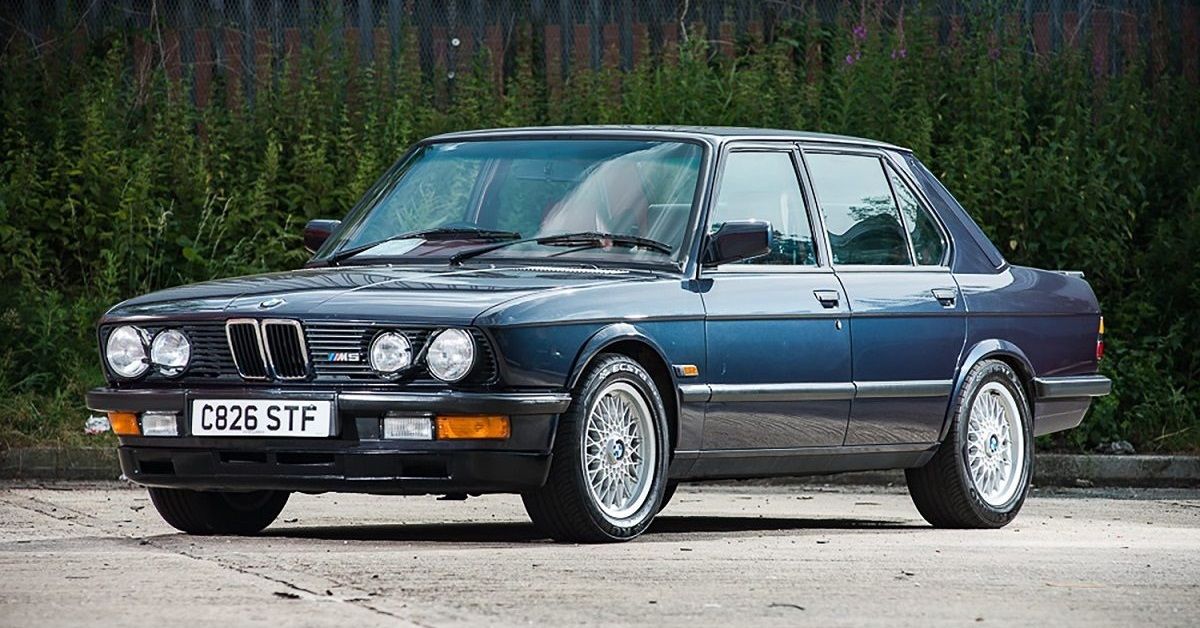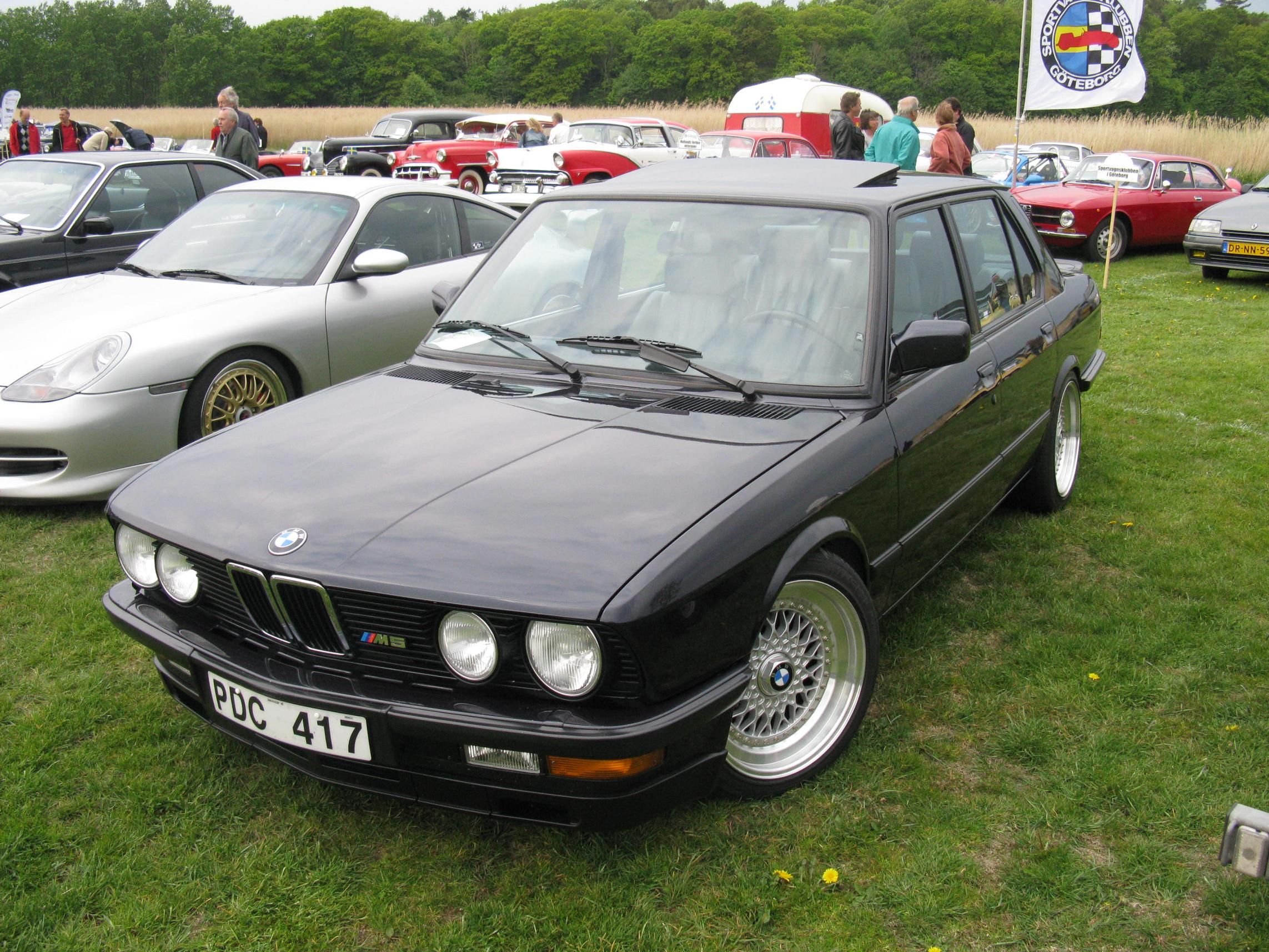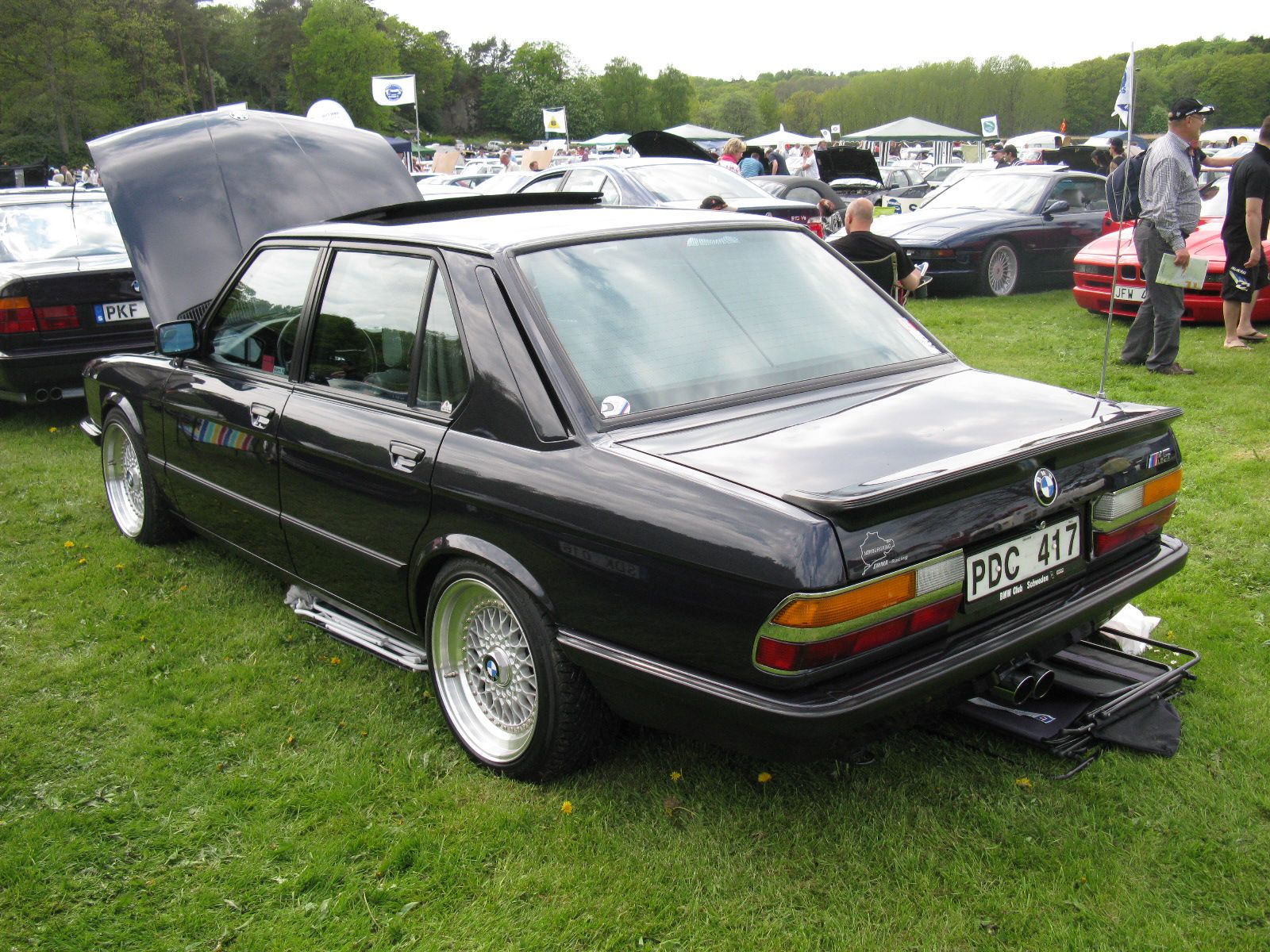When it comes to super saloons, BMW pretty much sets the benchmark with its M5. And there's plenty of good reasons for that, though the most notable is just how powerful it is. The latest M5 — the F90 — comes as standard with 592 bhp and can hit sixty in 3.3 seconds, while in Competition form, power is stretched to a mind-boggling 617 bhp. And remember, this is from a sedan.
But BMW has shown no signs of stopping, with a CS version — meaning "Competition Sport" — now set to release in 2022. Power will be pushed to an astonishing 627 bhp, while torque — the same 553 lb-ft as other variants — will now be available at a wider rev band (1,800-5,950 rpm).
To understand how all of this is possible, though, it's necessary to take a trip back to the mid-'80s and where it all began: the E28 M5. Now, BMW's M5, Audi's RS6 and Mercedes' E63 S, have all been around for quite some time, so we're all familiar with family-sized cars that can keep up with Ferraris. But in the mid-'80s, such a claim would be viewed as madness. Until the E28 M5 came along, that is.
So, since it's often credited as the car that laid the foundations for the super saloon era, let's take a detailed look back at the BMW E28 M5.
The E28 M5's place in BMW History
While the E28 M5 was revolutionary, really, it didn't just come out of nowhere. BMW's M Division — or M GmbH, to give it the proper name — launched in 1972, and in the years leading up to the E28 had developed some true performance icons. Firstly, there was the 3.0 CSL — or "Batmobile", to enthusiasts — which was a monster. From the track to the road, however, you looked at it. It was so quick, in fact, that it dominated in competition throughout the '70s, going on to win six European Touring Car Championship titles and back-t0-back class wins at the Le Mans 24 hours.
Then, of course, there was the legendary BMW M1 in 1978. The M1 had 273 bhp from its 3.5 liter engine — which was mounted in the middle — meaning sixty could be reached in 5.6 seconds, and it could go on to hit 161 mph. So it was properly quick, especially for the time. But the best part of the M1 was its concept car-like looks, which are still revolutionary to this day.
Then followed two more cars from BMW's coveted M Division, which, although not outright M vehicles, continued the run of performance-focused engineering: the E12 M535i and the E24 M635CSi. Both had 3.5 liter, straight-six engines giving out over 200 bhp, so they were quick. But the first none homologation, M-badged car, was still yet to come.
A Detailed Look At What Made the E28 M5 Special
So, by the time 1985 came around, BMW's M division knew a thing or two about making BMW's go quickly. And it continued with the E28 M5, and only things were pushed much further than before. To achieve its firepower, BMW looked to another icon for inspiration, using the same 3.5 liter, straight-six engine from the M1 — codenamed the M88 — and tweaking it for slightly more power. According to Evo, BMW's M division swapped the Kugelfisher fuel injection system for a Bosch Motronic system, resulting in a power increase of 9 bhp.
As such, power was now up to 282 bhp, meaning the M5 could reach sixty in around 6 seconds and max out at 156 mph. And yes, these figures are matched by your average hot hatch of today, but this was the mid-'80s, so those figures were rivaling — and, in many cases, beating — those of your typical supercar.
It wasn't just the straight-line grunt that was impressive, however, as BMW's M division paid just as much attention in other areas, too. According to Evo, the M5 received uprated anti-roll bars and Bilstein springs and dampers — until 1986, anyway, when they were then replaced with Boge items — as well as a limited-slip differential to help put the power down. As such, the E28 M5 was said to feel taut and controllable, with cornering abilities that matched its impressive power.
And then there were the looks, which made the E28 M5 the very definition of a sleeper. Save for the badges and the subtle front and rear spoiler, and the M5 didn't stand out as anything different from an ordinary E28. And that was a good thing since the E28 was already a looker to begin with, what with its shark-nose grille and boxy design lines.
Oh, and of course, it was practical and luxurious, too, as underneath everything was an executive car. So with that, you got a luxurious leather interior that could comfortably seat five, as well as a boot with more than enough space for shopping. So not only could it embarrass supercars in a drag race, it would outshine them in everyday use. It was a formula that revolutionized performance vehicles at the time and one that continues right to this very day.



